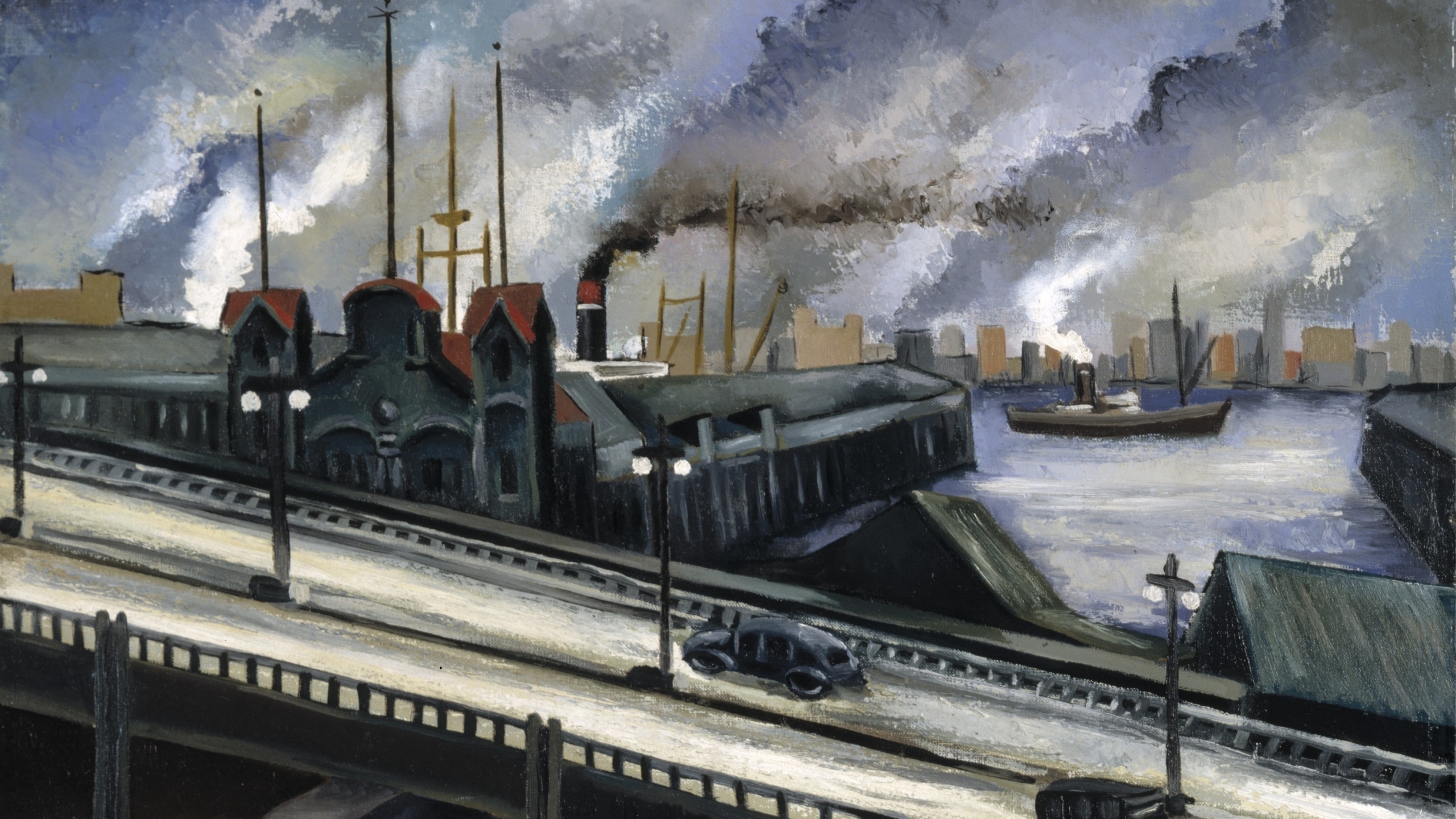
Anatomy of an Art World – The American Scene c. 1850-1950
On campus and online
Spring term
Tuesday 7 January – Tuesday 11 March 2025, 19:00
On campus
OR
Wednesday 15 January – Wednesday 19 March 2025, 20:00 [London time]
Online
£195
Booking for this term has now closed; however, you may be interested in our upcoming online course The Fear and the Fury: Abstract Expressionism. You can read more about our summer Showcasing term here.
After the Second World War, it was widely accepted that the centre of the art market had gravitated from Europe to the United States, and especially from Paris to New York. Just a century earlier, the American art world had been in its infancy. Our series will examine the institutions, processes and individuals that led to this triumphant moment, along with the societal shifts – cultural, political, demographic – that transformed the United States over the course of a century.
During the nineteenth century, the United States grappled with its identity as a young nation. Its emergent art world, bolstered by the proceeds of territorial expansion and significant industrial growth, was pre-occupied with the question of representing a national identity. Thomas Cole and the so-called Hudson River School emphasised the bucolic New England landscape as intrinsic to their vision of the nation, while in the West, Frederic Remington and Albert Bierstadt mythologised the explosive growth in the cities. A booming transatlantic art trade enabled fabulously rich Gilded Age elites to assemble major collections of European art and to establish the nation’s foundational art museums and galleries.
Counterbalancing this vision of inexorable progress was the legacy of the Civil War (1861-5) which had ruptured the nation and left fissures still evident today. Many Americans – Native, Black, immigrant – remained excluded from the institutions of the art world. At the start of the twentieth century, George Bellows, Robert Henri, and the Ashcan School turned to the spit-and-sawdust subjects of the labourers’ docks and the boxing ring, to focus attention on the daily lives of New York’s working class, while Augusta Savage and the Harlem Renaissance celebrated Black art uptown. We end with a close look at the 1940s, when the committed social realism of the Great Depression had given way to Abstract Expressionism, and American art – or at least one form of it – was in the ascendancy.
Confirmed speakers: Professor David Peters Corbett (The Courtauld); Dr Frances Varley (The Courtauld); Dr Matthew Holman (The Courtauld); Dr Madeleine Harrison (The Courtauld)
Moderator: Dr Anne Puetz (The Courtauld).
Course delivery details
This programme is delivered both on campus and online.
On-campus course delivery: lectures take place at our Vernon Square campus at 19:00, followed by discussion and drinks. Pre-course and further reading, and handout materials are available on our Virtual Learning Environment.
Online course delivery: this online lecture series consists of pre-recorded lectures, released weekly over 10 weeks, and each lecture viewable for a fortnight; pre-course and further reading, handout materials and a discussion forum are available on our Virtual Learning Environment; live discussions of each lecture take place via Zoom on Wednesdays at 20:00 [London time].





